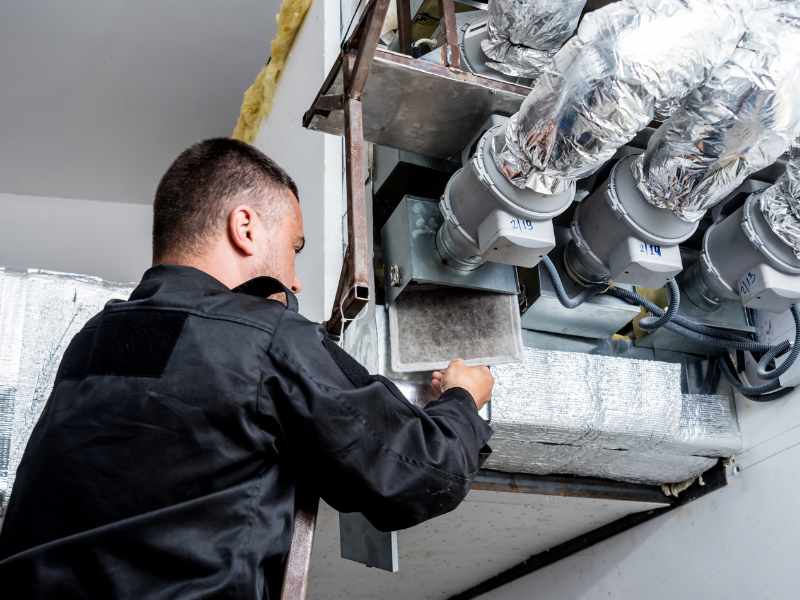Is a Multi-Zone HVAC System Worth the Investment?
Tired of thermostat wars or cooling rooms nobody uses?
A multi-zone HVAC zoning system solves these problems by controlling temperature independently in different areas, delivering individualized comfort while reducing energy costs by up to 30%. This guide explores how to create zones, available system types, cost savings potential, and long-term benefits to help you decide if this solution makes sense for your home.
Understanding HVAC Zoning Systems
A multi-zone HVAC zoning system uses motorized dampers and multiple thermostats to maintain precise temperature control in different zones. Unlike traditional setups with only one thermostat controlling the entire house, this solution lets each zone have its own thermostat for personalized comfort. A central control panel coordinates operations, directing airflow based on individual preferences and energy usage patterns.
How the System Works
Zone dampers—motorized plates inside ductwork—open and close to direct warm or cool air to specific zones. Multiple thermostats provide independent control, allowing different temperatures in different zones simultaneously. The central panel monitors demands and optimizes energy efficiency by heating or cooling only occupied spaces rather than the entire home.
Key Components
- Zone control panel ($120-$300): Manages system operations
- Motorized dampers ($70-$340 each): Direct airflow to specific zones
- Zone thermostats ($80-$600): Enable precise temperature control in each zone
- Bypass damper ($200-$500): Prevents excess pressure buildup
Types of HVAC Zoning Solutions
Choosing the right HVAC zoning solution is essential to maximize comfort and energy efficiency in your home. This section explores the main types of systems available, helping you understand their features and benefits to make an informed decision.
Ductless Mini Splits and Ductless Systems
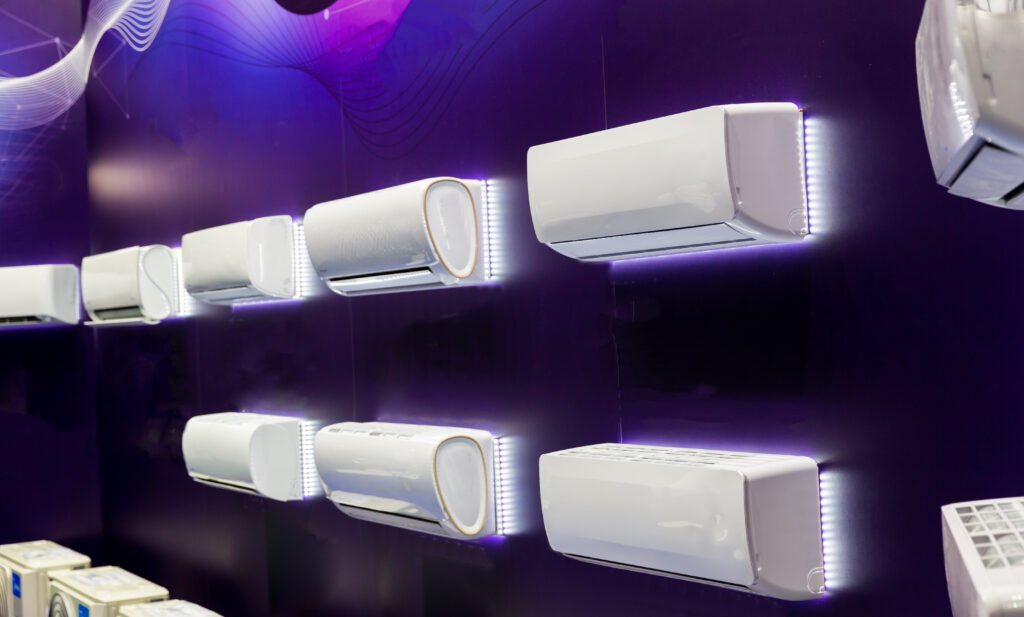
Ductless mini-splits represent the most popular HVAC zoning solution for homes without extensive ductwork. These ductless systems connect a single outdoor unit to multiple indoor units, eliminating 20-30% of energy losses from traditional ductwork. Modern air conditioning systems achieve 16-28 SEER2 ratings and reduce cooling costs by 25-40%.
Each indoor unit functions as an individual air handler with its own thermostat, allowing complete zone independence. Wall-mounted, ceiling cassette, or floor-mounted options fit various room designs. Setup is straightforward, and there’s no need for manual dampers or complex electrical wiring modifications. Discover which systems perform best by learning about the best ductless air conditioner options available for your home, or explore comprehensive details about ductless air conditioning systems to understand all your options.
For ongoing performance, professional mini-split service ensures your ductless system operates at peak efficiency throughout its lifespan.
Heat Pump Systems
Heat pump technology transfers warmth rather than generating it, providing both heating and cooling with exceptional energy efficiency. These air conditioning systems achieve 14.3+ SEER2 and 7.5+ HSPF2 ratings, using 30-50% less energy than conventional systems. Homeowners qualify for up to $2,000 federal tax credits for energy-efficient home improvements through December 31, 2025, making this an economical choice for whole-house temperature control.
For homeowners interested in combining heat pump efficiency with backup heating capability, explore dual fuel heating system options that maximize performance across all seasons and climate conditions.
Traditional Ducted Zoning for Existing HVAC Systems
For homes with traditional ductwork already installed, adding HVAC zoning to your existing HVAC system is cost-effective. Motorized dampers within ductwork create separate zones, with a central control panel directing airflow. This retrofit solution supports 2-8 multiple zones, depending on system capacity, and allows precise temperature control throughout your entire home.
Key Benefits of HVAC Zoning
Investing in a multi-zone HVAC system offers numerous advantages that enhance both comfort and energy efficiency in your home. Understanding these key benefits will help you see why HVAC zoning is a smart choice for modern residential climate control.
Individualized Comfort and Precise Temperature Control
Eliminate thermostat wars by setting different temperatures in different zones. Each family member can maintain their desired temperature in their own rooms without compromise. This innovative design addresses hot and cold spots, improves air distribution, and lets you optimize settings based on actual room usage and individual preferences.
For multi-story homes, HVAC zoning addresses the common issue of upstairs temperature differences. Create zones with independent control on each floor, ensuring comfortable conditions in your living space and bedrooms year-round.
Significant Energy Savings and Cost Reduction
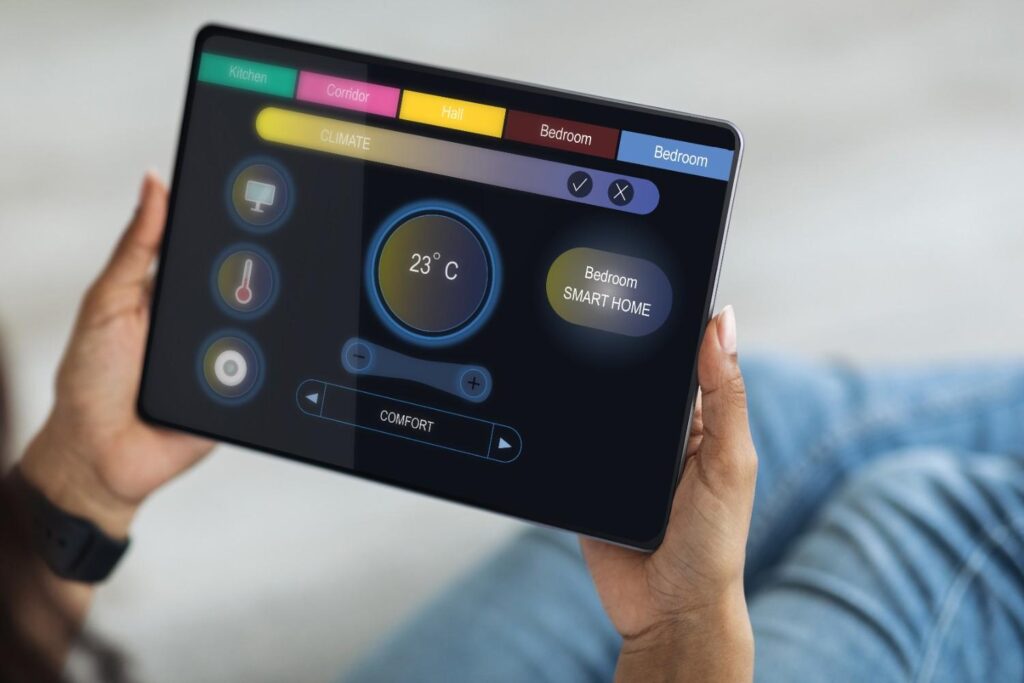
Improving your home’s energy efficiency stands as the primary benefit of HVAC zoning. By conditioning only occupied spaces rather than your entire house, these systems dramatically reduce wasted energy. Zone control reduces HVAC runtime by 20-30%, lowering energy bills by $500-$1,450 annually.
Additional cost savings come from:
- Avoiding heating or cooling unused rooms ($150-$400 yearly)
- High-efficiency air conditioning equipment with SEER2 ratings of 16-28 ($100-$300 annually)
- Smart thermostat scheduling and energy management ($50-$150 yearly)
Combined energy usage reductions deliver 30-40% total savings, translating to substantial decreases in energy costs and environmental impact.
Improved Indoor Air Quality
Zone-specific filtration ensures each area receives separately filtered air, preventing indoor air pollutants from circulating throughout your indoor environment. This approach benefits those with allergies or respiratory issues by reducing allergen circulation. Enhanced ventilation optimizes fresh air intake while maintaining energy efficiency across all zones.
For detailed guidance on maintaining clean air throughout your home, review our HVAC filters guide to understand filter maintenance and replacement schedules. Additionally, learn more about the air quality effects of proper HVAC zoning on your home’s health and comfort.
Determining How Many Zones You Need
The right number of multiple zones depends on your home’s layout, size, and how you use different spaces. Most homes fit these categories:
- Small homes (<1,500 sq ft): 2-3 zones | $1,500-$4,500
- Medium homes (1,500-2,500 sq ft): 3-4 zones | $2,200-$6,500
- Large homes (2,500-4,000 sq ft): 4-6 zones | $3,500-$10,000
- Very large homes (>4,000 sq ft): 6-8 zones | $5,000-$15,000+
Factors to Consider
Home layout significantly influences how many zones will work best. Multi-story homes benefit from at least one zone per level to address natural heat rise from downstairs to upstairs temperature areas. Sun exposure creates different heating loads—east and west-facing rooms experience varying conditions throughout the day.
Room usage patterns matter too. Frequently occupied living spaces require different settings than occasional-use bedrooms or guest rooms. Your household’s schedule and individual preferences should guide zone placement. Consider insulation quality, window placement, and ceiling height when planning where to create zones.
Installation and Setup Considerations
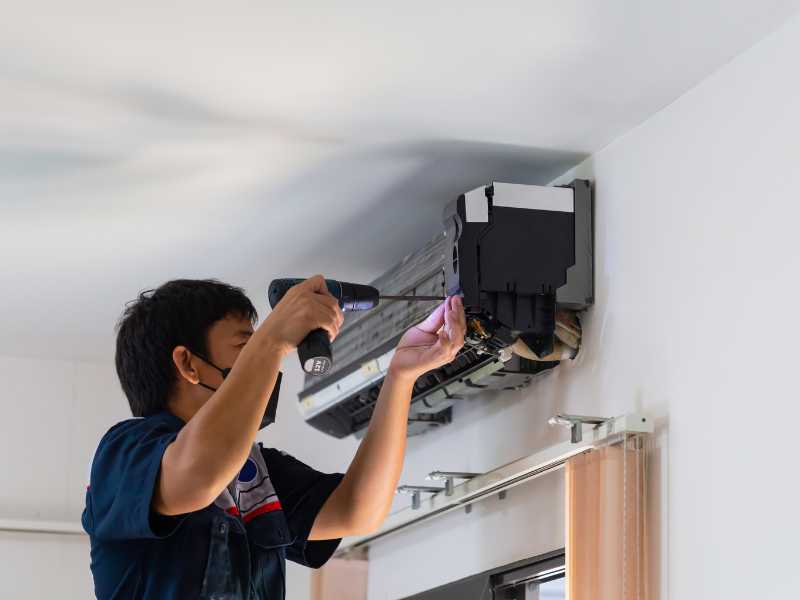
Proper installation and setup are crucial to ensure your multi-zone HVAC system operates efficiently and delivers the customized comfort you expect. Understanding the key factors involved will help you make informed decisions and avoid common pitfalls during the process.
Professional Installation vs. DIY
Professional installation ensures proper sizing, compliance with building codes, and manufacturer warranty protection. Certified technicians perform load calculations, determine optimal zone placement, and handle electrical wiring safely. Single-zone systems require $300-$2,000 in labor; multi-zone systems demand $700-$3,000+, depending on complexity. Permits add $100-$400, and electrical upgrades may cost $500-$2,000.
Retrofitting Your Existing HVAC System
Adding HVAC zoning to your existing HVAC system offers a practical, budget-friendly alternative to full replacement. The process involves system assessment, strategic zone design, damper installation in existing ductwork, control panel setup, and thermostat placement throughout your home.
Retrofitting costs depend on zone count:
- Two-zone addition: $1,700-$2,800
- Three-zone addition: $2,200-$3,500
- Four-zone addition: $2,600-$4,500
- Each additional zone: $350-$500
However, single-stage cooling systems may need bypass dampers to prevent excess pressure. Older equipment might lack sufficient capacity. A professional evaluation determines whether your existing system supports zoning or if new equipment provides better value.
System Costs and Return on Investment
Investing in a multi-zone HVAC system can seem significant upfront, but understanding the costs and long-term benefits helps clarify its value. This section breaks down initial expenses, potential savings, and maintenance considerations to guide your decision-making process.
Initial Investment Breakdown
Ductless mini splits range from $2,000-$6,000 (single-zone) to $9,000-$15,000+ (five-zone installations). Adding zoning to your existing HVAC system costs $1,700-$12,500. New construction typically costs 15-20% less than retrofitting existing homes.
Cost variations depend on the number of zones, system type, home accessibility, electrical work, and local permit fees.
Long-Term Savings and Payback Period
Multi-zone systems typically pay for themselves within 5-10 years. Consider this example: an $8,000 three-zone ductless system with $750 annual energy cost savings generates a payback period of 10.6 years and $15,000-$29,000 in net savings over 20 years.
Additional financial benefits include:
- Extended equipment lifespan through optimized energy usage
- Lower maintenance costs from reduced system strain
- Increased home value from upgraded climate control
- Federal tax incentives (up to $2,000 for qualifying systems)
Maintenance Requirements
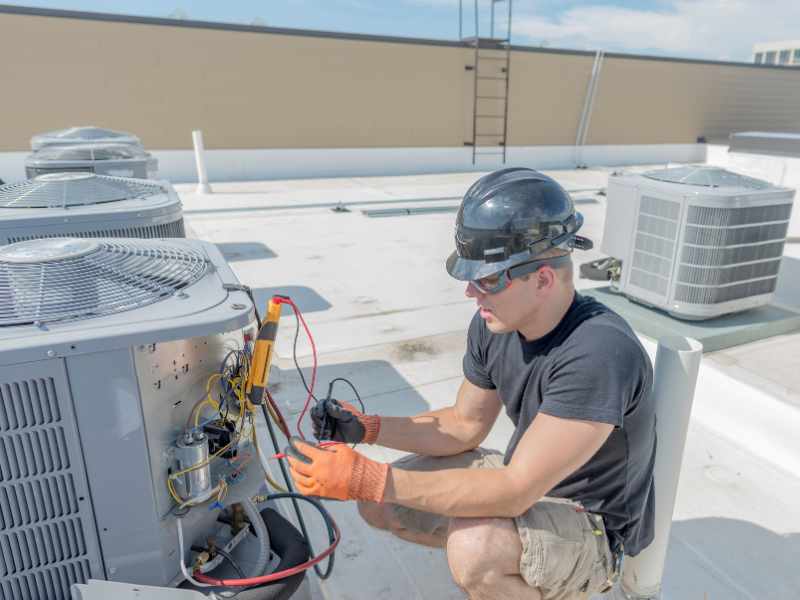
Proper maintenance is essential to keep your multi-zone HVAC system running efficiently and prolong its lifespan. Regular care ensures consistent performance, energy savings, and enhanced comfort throughout your home.
Homeowner Tasks
Regular filter checks and replacement (monthly check, replace every 1-3 months) keep your system running efficiently. Consult the HVAC filters guide for specific recommendations tailored to your system type. Clean indoor unit air handlers monthly, remove debris from outdoor units, verify thermostat accuracy, and monitor for unusual noises that might indicate service needs.
Professional Maintenance Schedule
Schedule biannual service—spring tune-ups before cooling season and fall tune-ups before winter months. Technicians perform system diagnostics, check refrigerant levels, test all zones, optimize airflow distribution, and calibrate controls. Proper maintenance extends equipment lifespan to 15-20 years while maintaining peak energy efficiency. If you experience issues like inadequate heating performance during winter, professional heating repair services address problems before they escalate.
Choosing the Right HVAC Zoning Solution
Selecting the appropriate HVAC zoning solution is crucial to achieving optimal comfort and energy efficiency in your home. This section will guide you through the key factors to consider when making this important decision.
System Comparison
| System Type | Best For | Energy Efficiency | Installation | Control |
| Ductless Mini Splits | Homes without ducts | 16-28 SEER2 | Moderate | Excellent zone independence |
| Ducted Zoning | Existing ductwork | 13.4-20 SEER2 | Complex retrofit | Good temperature control |
| Heat Pump | Year-round comfort | 14.3-22 SEER2 | Moderate-Complex | Heating & cooling zones |
Assessment Factors
Evaluate your home’s size, layout, construction type, insulation quality, and existing ductwork. Well-insulated homes require less capacity, while poor insulation demands more. Consider your climate—cold weather regions need robust heating capacity; hot climates prioritize cooling performance.
Verify your electrical panel can support additional equipment without expensive upgrades. Older homes may benefit from ductless systems that avoid extensive ductwork installation.
Conclusion
HVAC zoning systems represent a smart investment for homeowners seeking personalized comfort, lower energy bills, and individualized control over their indoor environment. Whether you choose ductless mini splits for maximum flexibility, heat pumps for year-round efficiency, or traditional ducted zoning for whole-house coverage, the technology delivers tangible benefits that justify the initial cost through long-term savings and enhanced living comfort.
The first step is scheduling a professional assessment to evaluate your home’s specific needs and determine which HVAC zoning solution aligns with your goals and budget. A qualified technician will calculate heating and cooling requirements, recommend optimal zone configurations, and provide transparent cost estimates to help you make an informed decision.
Ready to transform your home’s comfort and reduce energy bills?
Contact the experts at Callidus Air today to discuss your HVAC zoning options and discover how a customized solution can revolutionize your home’s climate control while delivering year-round savings.
Frequently Asked Questions About Multi-zone HVAC
How many zones do I need?
Zone requirements depend on home size, layout, and usage patterns. Small homes typically need 2-3 zones, medium homes need 3-4 zones, and large homes need 4-8 zones. Multi-story homes benefit from at least one zone per floor. A professional can assess your specific situation and recommend the optimal configuration for your needs.
Can I add HVAC zoning to my existing HVAC system?
Yes, most existing systems accommodate HVAC zoning through damper installation and control panel additions. Retrofitting costs $1,700-$4,500, depending on zones. However, single-stage systems may need bypass dampers, and very old equipment might lack sufficient capacity. Professional evaluation determines if your existing HVAC system supports zoning or if new equipment makes better financial sense.
What’s the cost of installing HVAC zoning?
Ductless mini splits range from $2,000 (single-zone) to $15,000+ (five-zone). Adding zones to your existing HVAC system costs $1,700-$12,500. New construction installations typically cost 15-20% less than retrofitting existing homes.
How much do I save on energy bills?
HVAC zoning systems achieve 30-40% energy usage reductions by conditioning only occupied spaces. This translates to $500-$1,450 in annual energy cost savings. High-efficiency equipment and smart thermostat scheduling maximize these reductions.
What maintenance does an HVAC zoning system require?
Check and replace filters monthly, keep outdoor units clear of debris, and monitor performance. Professional service twice yearly—before cooling and heating seasons—ensures optimal operation. Technicians inspect all zones, check refrigerant levels, and optimize airflow. Proper maintenance extends equipment lifespan to 15-20 years.

